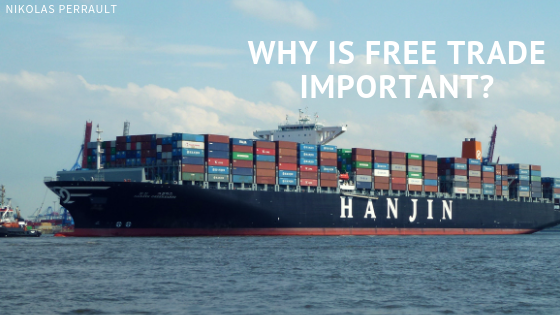In March, President Donald Trump released plans to impose tariffs of 25 percent on foreign steel and 10 percent on aluminum. He also later placed $50 billion of tariffs on China. In doing so, the United States declared a trade war against China. Global stock markets dropped as fear of a trade war among the world’s three largest economies rose. In response, China announced tariffs on $3 billion of goods, including pork, fruits, recycled aluminum and steel pipes.
In a trade war, a nation imposes a tariff on imports, and the other country retaliates by doing the same. As they escalate, these wars reduce international trade. In the short run, trade wars may work to protect an industry and create jobs. Tariffs give domestic producers a temporary cost advantage compared to imports creating more orders for the company which results in hiring additional workers.
However, in the long run, a trade war actually ends up costing jobs. It lessens economic growth for all of the countries involved and triggers inflation. The 1930 Smoot-Hawley Tariff worsened the Great Depression and was a contributing cause of World War II. While the goal was to help farmers in the United States who were hurt by the Dust Bowl, it ended up raising food prices for Americans already suffering from the Great Depression.
Though President Trump claimed trade wars are “good and easy to win,” he couldn’t be further from the truth. Trade wars have no lasting benefits for anyone involved. They only succeed in working against what they claim to be working towards. Trade wars ultimately lead to increased consumer product costs. They also result in worker layoffs as companies become unprofitable due to higher costs. In the United States, a nail company in Missouri had to lay off employees as steel prices were too high for them to be able to make a profit. Harley Davidson, which had been praised by Trump for manufacturing their products in America, has announced plans to move some of their production overseas to avoid tariffs.
Free trade allows consumers to buy higher-quality products at lower prices. It increases innovation, enhances efficiency and drives economic growth. As overall trade increases, so do the benefits that come along with it. Free trade forces competitivity and focuses on business development and investment in areas where competitive advantage may be obtained and maintained. In a nutshell, it forces companies to adapt existing practices to remain competitive or if impossible, to seek diversification. The world economy is growing and changing continuously. Tomorrow’s successful companies will be those able to adapt and profit from change, not those requiring government protection.
